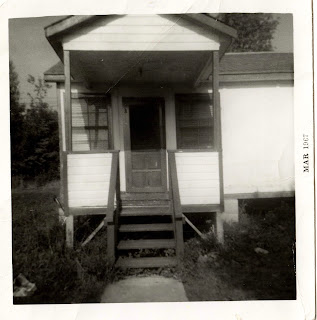Catskills Life in A Walk on the Moon
By Simon Hodgson
High above the Hudson River in upstate New York, the Catskill Mountains are among the most picturesque regions in the United States. For hundreds of thousands of Jewish households between 1910 and 1970, the Catskills became their summer destination. For non-Orthodox households, such as the Kantrowitz family and their friends in A Walk on the Moon, this region represented a rural retreat whose bungalows created a tight-knit community. The bungalow colonies were made up of modest, detached, two-bedroom cabins with their own bathroom and cooking facilities. By the 1940s and ’50s, kucheleins (private rooms with shared kitchens) and bungalow colonies (such as the fictional Dr. Fogler’s in Moon) attracted more than 80 percent of the region’s Jewish vacationers every year.
 |
| Marty (Jonah Platt) and Pearl (Katy Brayben) talk outside their bungalow in A.C.T.’s 2018 production of A Walk on the Moon. Courtesy @jonahplatt on Instagram. |
For most bungalow colonies and smaller hotels, the easy rhythm of the days would be accented by visits from traveling peddlers, from Hymie the Dairyman to Ruby the Knish Man to garment vendors hawking blouses. Children and mothers alike would visit the carts or car trunks, sometimes for a tasty treat, but often just to break up the routine. The slow days could be a grind for teenagers accustomed to living in the city. Many felt like Alison in A Walk on the Moon, who sings, “It’s the summer of ’69 out there / It’s the summer of ’59 up here / There’s something happening everywhere / Everywhere but here.”
 |
| Pamela Gray’s family bungalow at Tommy’s Lodge, Swan Lake, in the early 1960s. Courtesy Pamela Gray. |
A Walk on the Moon runs through July 1 at A.C.T.’s Geary Theater. Click here to purchase tickets. Want to learn more about the history behind the show? Order a copy of Words on Plays, A.C.T.’s in-depth performance guide series.

